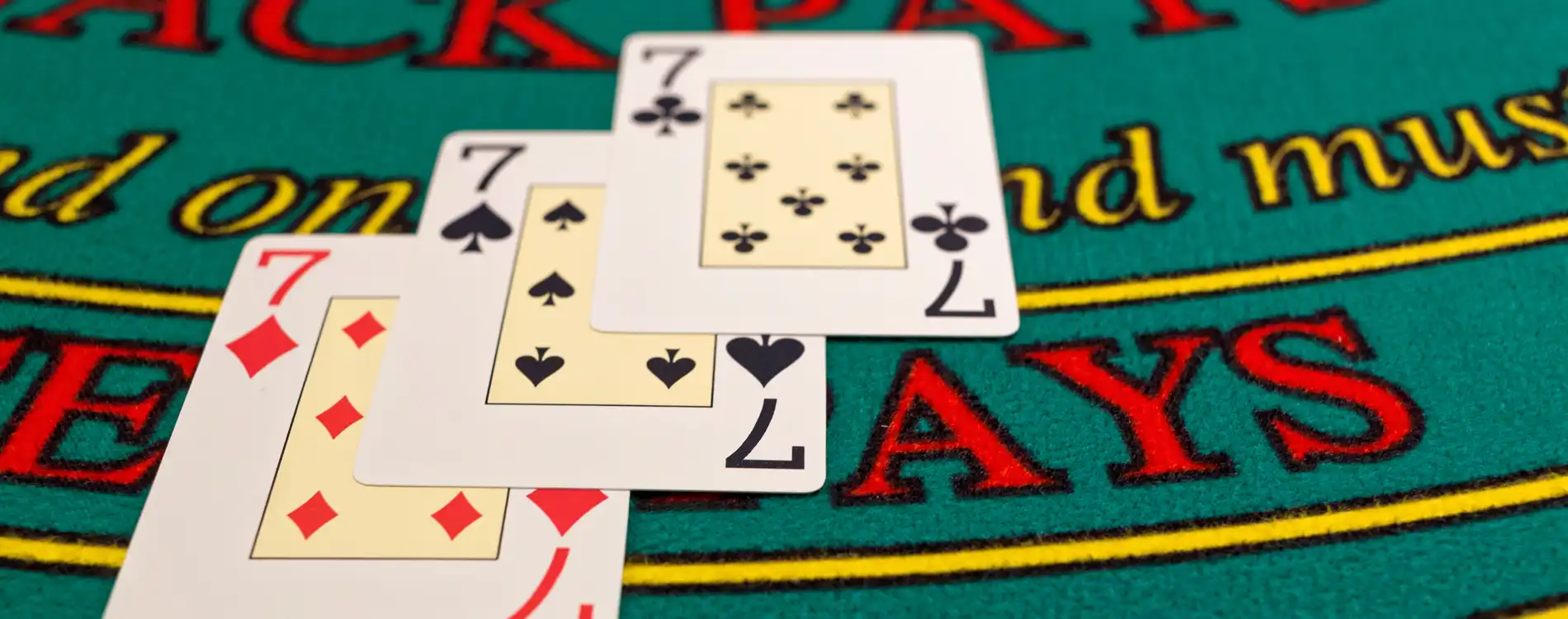"Doubling Down" redirects here. For the South Park episode, see Doubling Down (South Park).
After the initial two cards, the player has up to five options: "hit", "stand", "double down", "split", or "surrender". Each option has a corresponding hand signal.

Hit: Take another card.
Signal: Scrape cards against the table (in handheld games); tap the table with a finger or wave a hand toward the body (in games dealt face-up).
Stand: Take no more cards; also known as "stand pat", "sit", "stick", or "stay".
Signal: Slide cards under chips (in handheld games); wave hand horizontally (in games dealt face-up).
Double down: Increase the initial bet by 100% and take exactly one more card. The additional bet is placed next to the original bet. Some games permit the player to increase the bet by amounts smaller than 100%, which is known as "double for less".[12] Non-controlling players may or may not double their wager, but they still only take one card.

Signal: Place additional chips beside the original bet outside the betting box and point with one finger.
Split: Create two hands from a starting hand where both cards are the same value. Each new hand gets a second card resulting in two starting hands. This requires an additional bet on the second hand. The two hands are played out independently, and the wager on each hand is won or lost independently. In the case of cards worth 10 points, some casinos only allow splitting when the cards rank the same. For example, 10-10 could be split, but K-10 could not. Doubling and re-splitting after splitting are often restricted. A 10-valued card and an ace resulting from a split usually isn't considered a blackjack. Hitting split aces is often not allowed. Non-controlling players can opt to put up a second bet or not. If they do not, they only get paid or lose on one of the two post-split hands.
Signal: Place additional chips next to the original bet outside the betting box and point with two fingers spread into a V formation.
Surrender: Forfeit half the bet and end the hand immediately. This option is only available at some tables in some casinos, and the option is only available as the first decision.
Signal: Spoken; there are no standard signals.
Hand signals help the "eye in the sky" make a video recording of the table, which resolves disputes and identifies dealer mistakes. It is also used to protect the casino against dealers who steal chips or players who cheat. Recordings can also identify advantage players. When a player's hand signal disagrees with their words, the hand signal takes precedence.
A hand can "hit" as often as desired until the total is 21 or more. Players must stand on a total of 21. After a bust or a stand, play proceeds to the next hand clockwise around the table. After the last hand is played, the dealer reveals the hole card and stands or draws according to the game's rules. When the outcome of the dealer's hand is established, any hands with bets remaining on the table are resolved (usually in counterclockwise order); bets on losing hands are forfeited, the bet on a push is left on the table, and winners are paid out.
